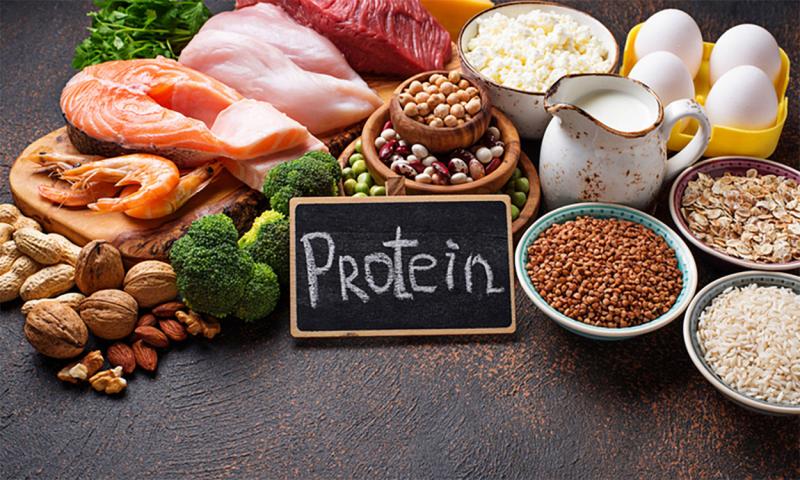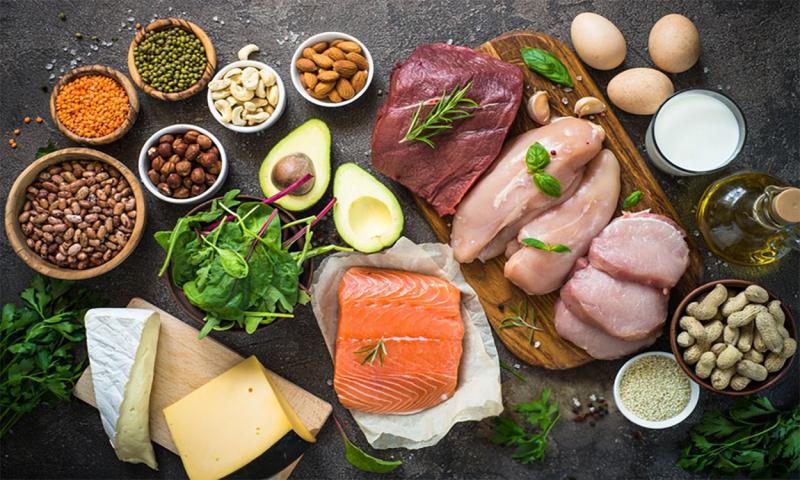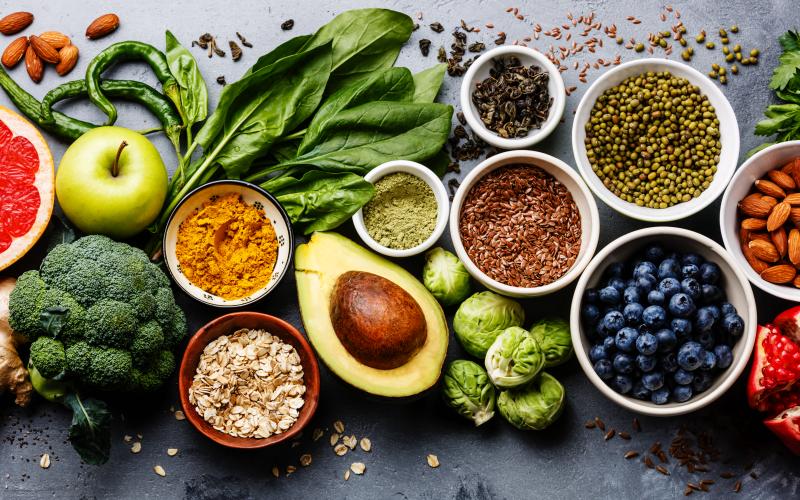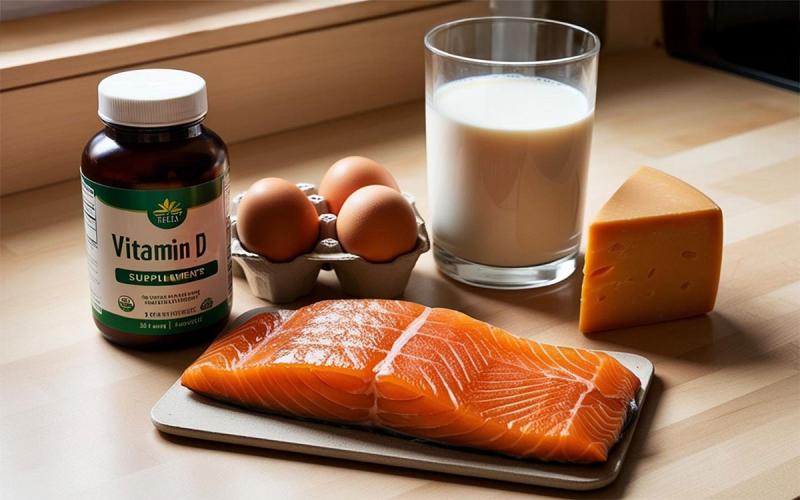Originally written by Anna Tvedt, former SDSU Extension Nutrition Field Specialist.
There are two categories of nutrients: macronutrients and micronutrients. Macronutrients are needed in large amounts, and micronutrients are needed in small amounts. In addition to this, macronutrients provide energy in the form of calories and micronutrients do not. Macronutrients include carbohydrates, lipids, and proteins. Vitamins and minerals are micronutrients. Water could be considered either, because it is needed in large amounts (macronutrient) but does not provide calories (micronutrient). This article will explore protein.
What is Protein?

Structure
Protein is an essential nutrient composed of the elements carbon, hydrogen, oxygen, and nitrogen. These elements bond in different formations to create twenty different amino acids, the building blocks of protein.
Amino Acids
The body needs 20 different amino acids to function. However, 11 of them can be made in the body from other amino acids. These don’t have to come from the diet, so they are considered “nonessential”. The nine amino acids that cannot be made in the body are considered “essential” to consume in the diet. Below are the names the 20 amino acids and their designated categories.
Essential Amino Acids
- Histidine
- Isoleucine
- Leucine
- Lysine
- Methionine
- Phenylalanine
- Threonine
- Tryptophan
- Valine
Nonessential Amino Acids
- Alanine
- Arginine
- Asparagine
- Aspartic Acid
- Cysteine
- Glutamic Acid
- Glutamine
- Glycine
- Proline
- Serine
- Tyrosine
Dietary Sources

Protein foods that have all nine essential amino acids are considered complete, whereas protein foods that are missing at least one of these amino acids are considered incomplete. Generally, animal proteins are complete and plant proteins are incomplete. Consider the following sources (and please note that this list is not comprehensive):
- Meat: Beef, bison, deer, pork, lamb
- Poultry:Chicken, turkey, duck, pheasant
- Fish and Shellfish:Walleye, bass, catfish, cod, salmon, tuna, shrimp, lobster, mussels, scallops, oysters
- Dairy: Cheese, milk, whey, yogurt, cottage cheese
- Eggs
- Soy: Tofu, soymilk, edamame, sprouts, tempeh
- Legumes: Peanuts, peanut butter, lentils, chickpeas, navy beans, black beans, kidney beans, green peas, black-eyed peas
- Nuts: Cashews, almonds, walnuts, pecans, pistachios, pine nuts, macadamias, Brazil nuts, nut butters
- Seeds: Sunflower seeds, pumpkin seeds, chia seeds, hemp seeds, flax seeds, sesame seeds
- Whole grains: Wheat, rice, oats, corn, quinoa, couscous, farro, millet, buckwheat
For more about protein food quality, see our article, High Quality and Affordable Protein Options.
Adequate Amounts
The recommended average intake of protein per day is set as a percentage of total calories. It is 10 to 35% for adults, 10 to 30% for children ages 4 to 18, and 5 to 20% for children ages 1 to 3.
For example, a typical adult diet is approximately 2,000 calories per day. Multiplying 2,000 by 10% and 35% equals 200 to 700 calories per day. Since protein provides four calories per gram, dividing calories by four determines grams of protein per day: for example, 50 to 175 grams per day. Greater than average protein intake is required during times of illness, injury, and strenuous physical activity. Lower protein intake may be needed by people with kidney disease. Consult a doctor or registered dietitian for individualized intake recommendations.
Functions

When proteins are consumed in food or drink, they are broken down (digested) into amino acids, absorbed in the gut, and used to build up different proteins needed by the body. The functions provided are listed below.
- Structural material: Protein is the main structural material in the body, forming bone, muscle, and cell membranes. Primary structural proteins include collagen, actin, and myosin. Amino acids are also important components in blood, cell membranes, enzymes, and immune factors.
- Fluid balance: Proteins in the blood (albumin and globulin) draw fluid away from the spaces between cells (called interstitial space) and into the bloodstream to support fluid balance. When protein levels in blood are inadequate, excess fluid builds up in tissue, causing swelling, also known as edema.
- Acid-base balance: The body’s pH is tightly regulated at 7.35 to 7.45. Proteins located on cell membranes pump ions in and out of cells, contributing to acid-base balance.
- Immune Function: Antibodies are proteins that bind to foreign proteins (called antigens) to prevent their attack on cells to prevent infection and disease.
- Nutrient transportation: Proteins act as transporters by carrying nutrients through the bloodstream to cells and across cell membranes to sites of action. For example, hemoglobin is a protein that carries oxygen from the lungs to cells.
- Energy: The body typically uses little protein to meet energy needs. If carbohydrate or lipid intake is inadequate, protein will be used for energy and provides four calories per gram. North Americans typically consume near or above the upper level of the protein range. Excess protein cannot be stored and is instead broken down. Protein can be converted to glucose (typically from carbohydrate) to provide energy to cells that exclusively require glucose, such as blood, brain, and nervous tissue.
Sources
- Byrd-Bredbenner, C., & Wardlaw, G. M. (2014). Wardlaw’s perspectives in nutrition: A functional approach. McGraw-Hill.


